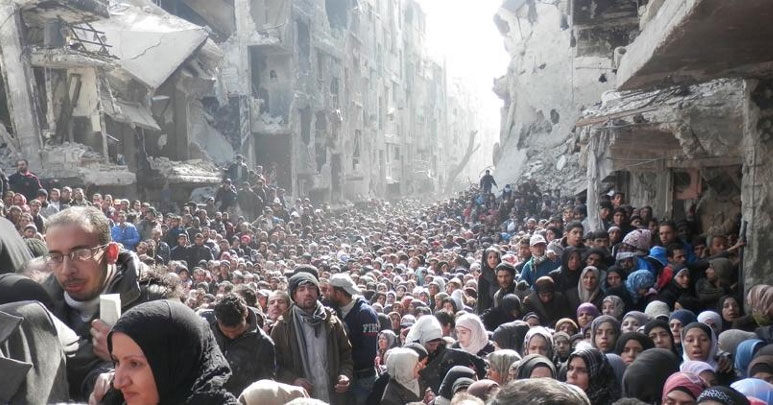“Starving civilians is not a collateral effect of the conflict in Syria, but a deliberate decision that violates international humanitarian law and can amount to a war crime,” says Marjolein Wijninckx, Syria program officer of PAX.
“Although proposed air drops should be considered seriously, these are still far from a long-term solution to end the suffering of Syrians under siege. As long as war crimes continue, Syrians will not have any faith in the political process and any agreement will remain words on paper.” The UN plans to start peace talks between Syria’s government and opposition in Geneva very soon.
More than a million people are living under siege in Syria, according to a research which is systematically tracking sieges through data collected from an extensive network of reporting contacts on the ground. The research siegewatch.org, a joint initiative of Dutch peace organisation PAX and The Syria Institute, aims to increase international awareness to help bring end to Syria’s sieges.
“For Syrians living in besieged communities, the situation continues to deteriorate,” explains Valerie Szybala, Executive Director of The Syria Institute. “With Russian airstrikes and yet another freezing winter exacerbating this humanitarian crisis, a solution is needed now more than ever.”
A siege occurs when armed forces cut off access to a populated area, blocking the entry of food and medicine and preventing the free movement of civilians into or out of the area, including the evacuation of people in need of urgent medical care. In Syria, this military tactic has been applied systematically against civilian populations primarily by the Syrian government, and to a much lesser extent by some opposition groups as well as ISIS, as a form of collective punishment against areas it does not control. The result is a man-made humanitarian disaster with over a million victims, some who have been trapped for three years. Because this crisis is physically contained, many people in the outside world are not even aware that these sieges are being conducted. The United Nations Secretary-General reports monthly on the situation in Syria, but the statistics do not match the reality reported by Syrians living in besieged communities.
About Siege Watch
The Siege Watch research monitors and reports on Syria’s besieged areas using data collected on an ongoing basis from an extensive network of reporting contacts on the ground. In most cases, the reporters are affiliated with a Local Council, which already has processes in place to document the conditions of the siege such as deaths, changes in access, and price fluctuations. In some instances a Local Council partner could not be identified and an alternative local civil authority, such as a medical office or citizen journalists reporting network, has been used instead. These cases are duly noted in the interactive map www.siegewatch.org. All reporting sources are voluntary participants in this project, and none have been paid for their data. Next to the interactive map PAX and the DC-based The Syria Institute will publish in-depth quarterly reports, ensuring that the international community has access to timely, accurate information about the ongoing sieges. The first quarterly report on sieges in Syria will be published in February 2016.
See the interactive map documenting all known sieges on siegewatch.org.
Read also the media statement from Crisis Action: Ending Unlawful Sieges and Atrocities is a Prerequisite for Syria Peace, NGOs say (english or arabic)
Read also: PAX Syria Alert XVIII: Over a million Syrians are under siege




